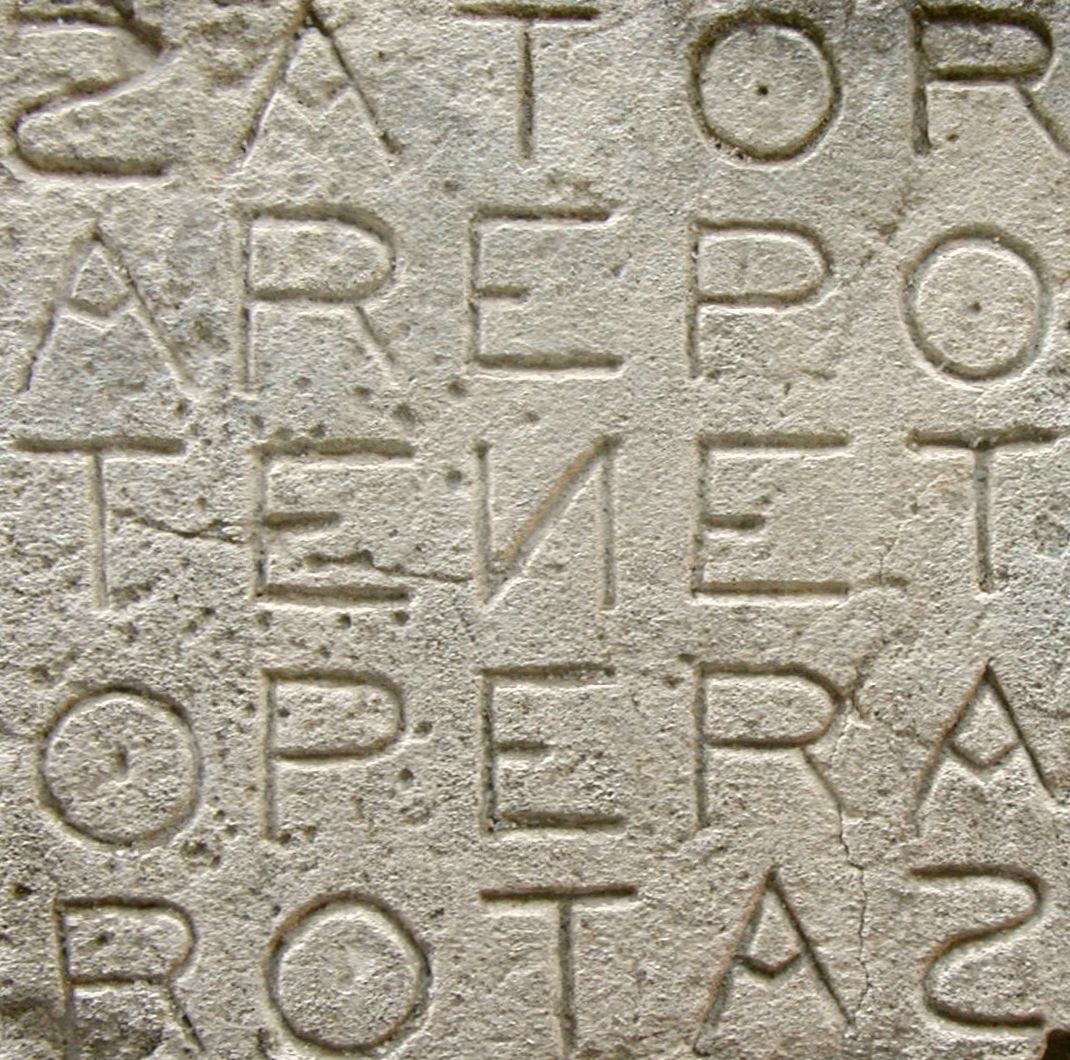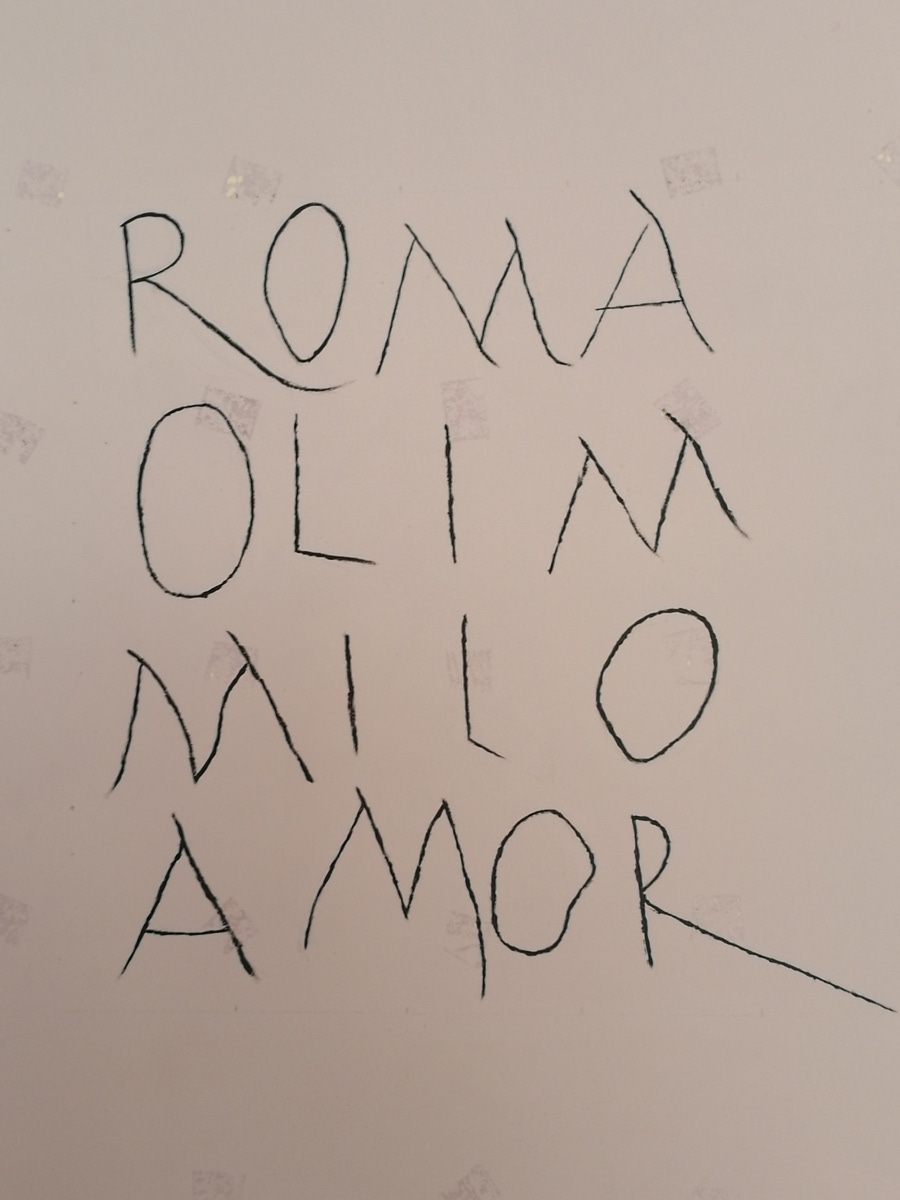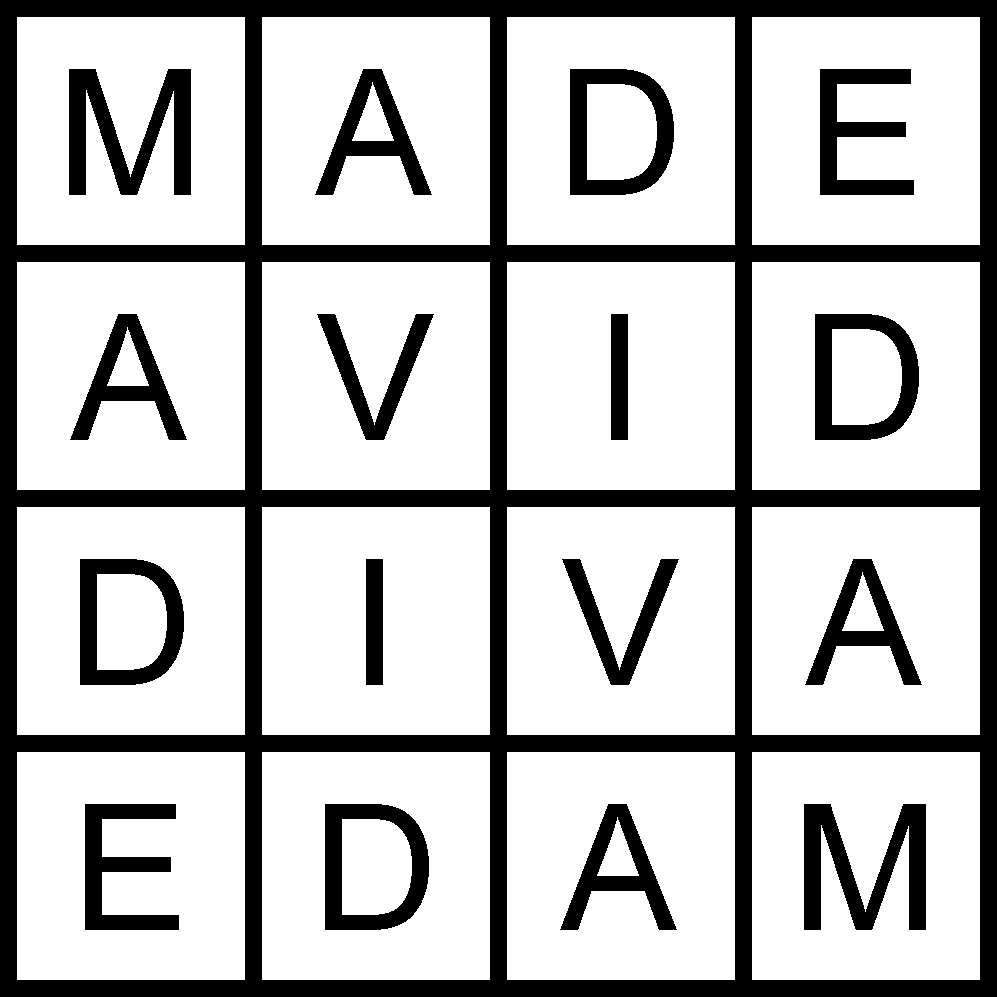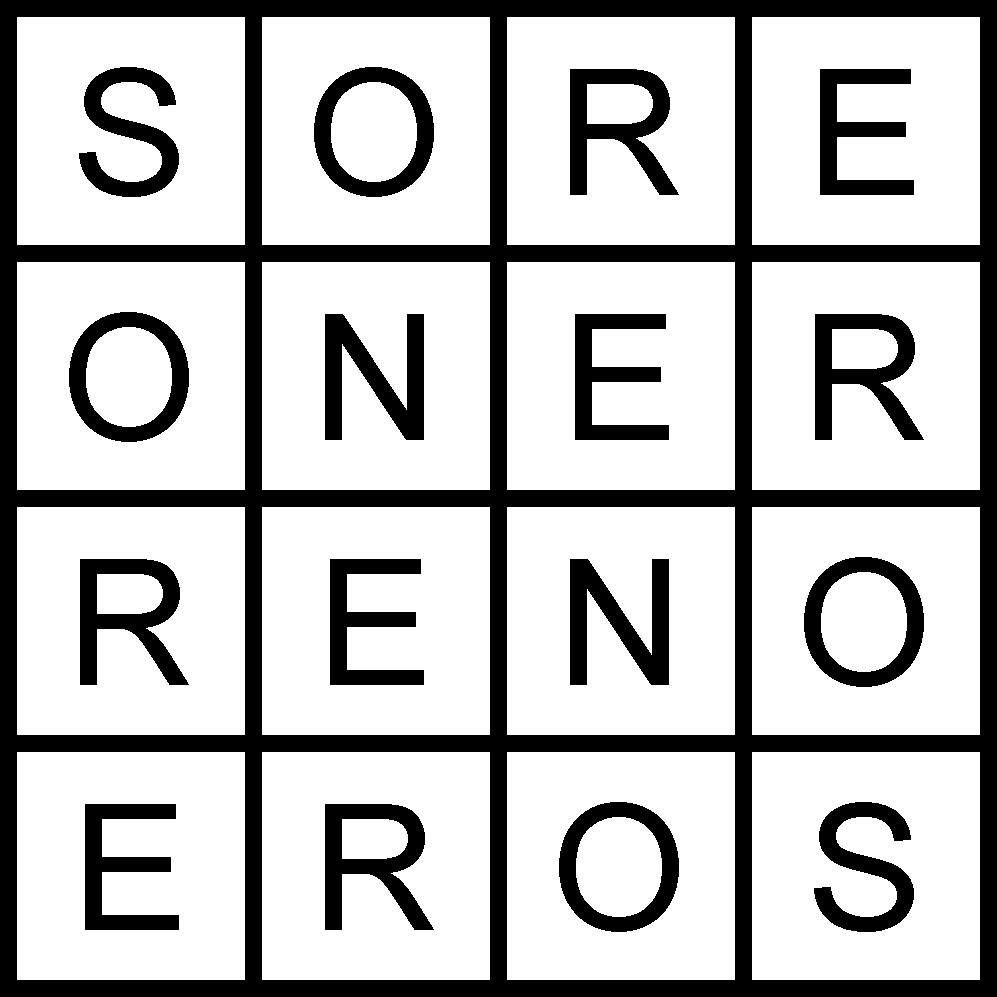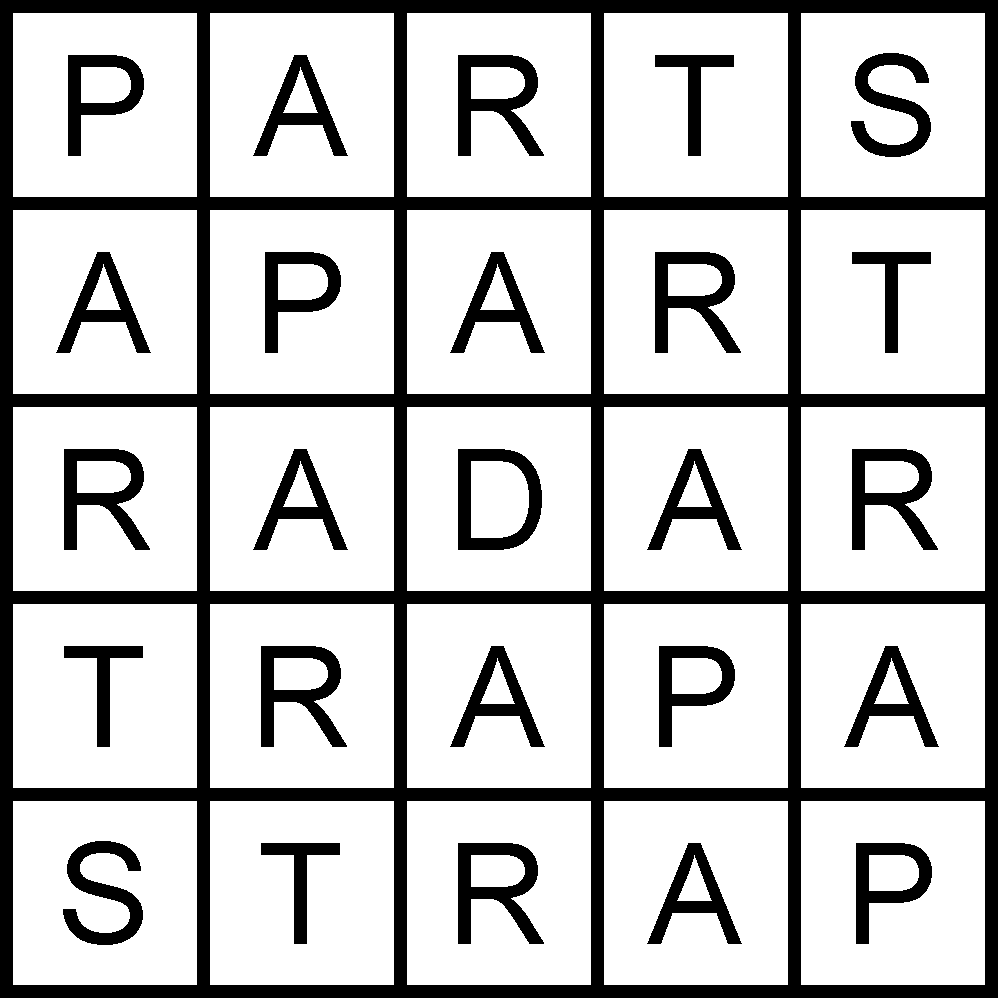Christopher Nolan’s Tenet includes nods to all five lines of the Sator square, a design found in Pompeii, Manchester, and several other sites of the Roman Empire. The post-volcanic ruins of Pompeii made its Sator square very well preserved.
Even by modern standards, and though one of its five lines looks made-up, the Sator square is a remarkable achievement. It’s a palindromic word square, which makes it a four-way palindrome, reading backward and forward and up and down—SATOR AREPO TENET OPERA ROTAS, which probably translates as “the farmer Arepo works his plow-wheels.” The name “Arepo” occurs nowhere else in Latin.
Nolan’s Sator fascination has precedent. Long after the Roman Empire fell, people were keeping Sator squares in their homes, believing they had magic powers to ward off illness or ill fortune. (Considering their subject matter, I’d expect they’d also help with crops. Put Arepo to work for you!)
But is the Sator square the only one of its kind? Heck no…it wasn’t even the only one of its kind in Pompeii.
The ROMA square—ROMA OLIM MILO AMOR—is less technically impressive, but likely more pleasing to its original audience. Patriot Romans loved how their capital city and cultural identity, Roma, reversed to spell amor, love.
The full square translates to Rome once Milo love. Without context, it’s not clear how to parse that. Did Rome once love Milo? Was Rome once Milo’s love? Either interpretation hints at some drama.
So the Sator square isn’t the only palindromic word square with a guessable meaning. Can we build such squares in English?
At the 3x3 level, that’s challenging but not impossible—my latest micross follows that pattern, but without an obvious narrative. “Pat” AKA “tap” works to describe two gestures with overlapping meanings. Nap a la Pan is to sleep innocently like a Greek nature god.
Moving up to 4x4s, we get this image of serving a Hollywood star’s outrageous backstage demands:
Alternatively, if you believe such squares do have magic powers, this could describe turning a demanding actor or singer into cheese.
Then there’s this tale of debauchery. ONER is a bit archaic, but its meaning (a unique person, thing, or event) fits the rest of the grid’s tone…
What oner did you perform in Reno in a state of eros that left you sore? The answer is left as an imaginative exercise for the reader.
At the 5x5 level, though, things get sticky.
Jeff Grant created a couple of “Modern Sator Squares” for Word Ways, but they took a lot of explaining. For Grant, spinning elaborate contexts for Resat, enema seres amene taser and Redan enema dexed amene Nader was part of the fun. Shorn of those paragraph-long explanations, though, the squares are tough to parse at best.
One big issue is that most palindromic or reversible words in English begin and end with a consonant, but only the ones that begin and/or end with a vowel can supply a vowel for the first word and the last. That’s probably why Grant resorted to the unpleasant image of an enema and the obscure amene, meaning amenable or pleasant.
After many attempts, the best I can come up with is…
Parts apart! Radar, trap a strap! Parsed this way, the square is urging detection of the path of a strap that’s fallen off a machine after it shattered in a collision or explosion. That image has a certain postmodernist, chaotic beauty. But, to my ear, it doesn’t match the simple charm of farmer Arepo’s labor. And it uses a two-word line—trap a—which might strike you as a cheat.
Then again, the name “Arepo” is kind of a cheat, too. For all the celebration the Sator square has attracted over two millennia, for all its elegant symmetry, it’s still possible to imagine its author poring over it and muttering…
“Oh, well. Four out of five ain’t bad.”
Tomorrow: Celebrity soundalikes!



